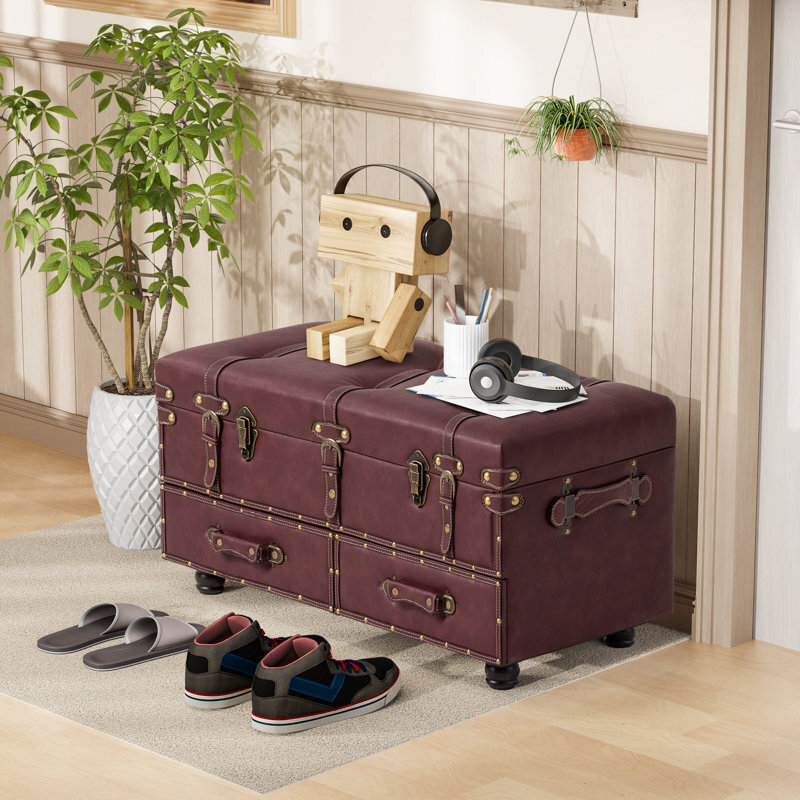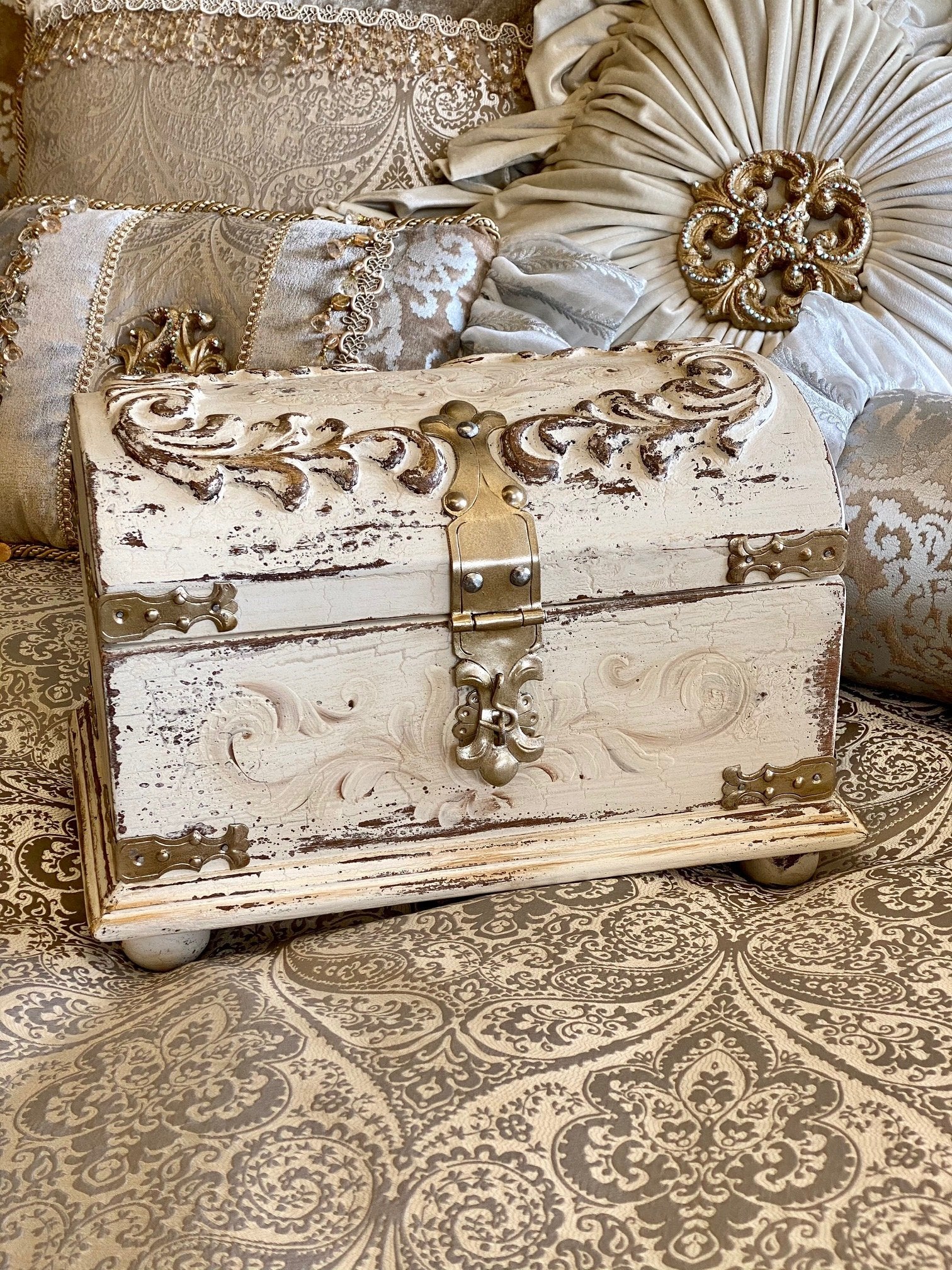Decorative chest boxes are more than just storage solutions; they are versatile pieces of art that can enhance your home décor. Whether you’re looking to declutter your living space, add a touch of personality, or find a unique gift, decorative chest boxes offer endless possibilities. In this guide, I’ll share my personal experiences with decorative chest boxes, tips for selecting the perfect one, and insights into their various styles and functions.
What is a Decorative Chest Box?
A decorative chest box is typically a small, often ornate, container used for storing a variety of items. These boxes can be made from various materials, including wood, metal, fabric, and more. They come in numerous styles, from antique to modern, and can serve both functional and aesthetic purposes.
Why Choose Decorative Chest Boxes?
Here are a few reasons why decorative chest boxes are a worthy addition to any home:
- Versatility: They can be used in various rooms, such as living rooms, bedrooms, or home offices.
- Style: Available in different designs to match any interior theme.
- Storage: Great for organizing small items while keeping your space tidy.
- Personal Touch: They can reflect your personality and taste, making your space feel more like home.
Types of Decorative Chest Boxes
When shopping for decorative chest boxes, it’s essential to know the different types available. Below are some popular styles:
1. Vintage Chest Boxes
Vintage chest boxes evoke a sense of nostalgia and can serve as stunning focal points in any room. Often made of wood with intricate carvings, they may also display unique patinas that enhance their charm.

2. Modern Decorative Boxes
Modern decorative boxes are sleek and minimalistic. They often use materials like glass, metal, or even acrylic, making them ideal for contemporary settings.
3. Rustic Chest Boxes
Rustic chest boxes are great for adding warmth to your décor. Typically made from reclaimed wood, they feature a natural finish that complements country or farmhouse styles.

4. Fabric Chest Boxes
Fabric chest boxes can add a soft touch to your décor. Usually padded and upholstered, they come in various patterns and colors, making them perfect for children’s rooms or cozy spaces.
Materials Used in Decorative Chest Boxes
The material of a decorative chest box significantly influences its aesthetic appeal and durability. Here are the most commonly used materials:

1. Wood
- Pros: Durable, offers a classic look, can be carved or painted.
- Cons: Can be heavy and more expensive depending on the type of wood.
2. Metal
- Pros: Robust and durable, often comes in striking designs.
- Cons: Can be prone to rust or corrosion, depending on the finish.

3. Fabric
- Pros: Soft texture, available in numerous colors and patterns.
- Cons: May not hold heavy items well and can be tricky to clean.
How to Choose the Perfect Decorative Chest Box
With so many options available, choosing the right decorative chest box can be overwhelming. Here are some tips based on my experiences and preferences:

1. Define Your Purpose
Start by determining what you want to store in the chest box. Will it be for blankets, toys, or decorative items? Knowing this will help you decide on size, material, and design.
2. Consider Your Decor Style
Choose a chest box that complements your existing décor. For example, a vintage chest box fits well in a rustic or traditional space, whereas a sleek metallic design would suit a modern setting.

3. Assess Size and Storage Needs
Measure the space where you plan to place the chest box and be aware of its dimensions. Ensure it fits the area without overcrowding, while still providing the storage you need.
4. Quality and Craftsmanship
Look for quality materials and craftsmanship. A well-made chest box not only lasts longer but also adds more value to your home.

Where to Place Your Decorative Chest Box
Placement can make a significant difference in the effectiveness of decorative chest boxes. Here are some popular spots:
1. Living Room
In the living room, a decorative chest box can serve both as a coffee table and a storage unit. It can hold magazines, remotes, or even puzzles.
2. Bedroom
Use a chest box at the foot of your bed to store extra linens or blankets. This creates a cozy atmosphere while being functional.
3. Entryway
A chest box in the entryway can store shoes, scarves, or bags, keeping your space organized and welcoming.
Comparison of Popular Decorative Chest Boxes
| Type | Material | Size | Price Range | Ideal Use |
|---|---|---|---|---|
| Vintage Wooden Chest | Wood | Medium to Large | $100 – $300 | Decorative Storage |
| Modern Metal Box | Metal | Small to Medium | $50 – $150 | Minimalist Decor |
| Rustic Wooden Box | Reclaimed Wood | Medium | $80 – $250 | Country Style Decor |
| Fabric Storage Box | Fabric | Small | $30 – $80 | Kids Room |
Maintenance Tips for Decorative Chest Boxes
Taking care of your decorative chest box helps it maintain its beauty and functionality. Here are some maintenance tips:
1. Clean Regularly
Dust your chest box regularly using a soft cloth. For wooden boxes, use polishing products recommended for wood to maintain shine.
2. Avoid Direct Sunlight
Keep your decorative chest away from direct sunlight to prevent fading or warping, especially if it’s made of wood or fabric.
3. Inspect for Damage
Regularly check for any signs of damage, such as cracks or looseness in hinges or clasps, and address them promptly to avoid further issues.
Personal Experience with Decorative Chest Boxes
When I first decided to purchase a decorative chest box, I had no idea how transformative it would be for my space. I opted for a vintage wooden box, which has become a central feature in my living room. Not only does it store my favorite books and magazines, but it also adds a touch of elegance to the room’s decor. Family and friends often comment on how much they love the box and how it perfectly fits my style. This personal touch makes my space feel more inviting and unique.
Conclusion
Decorative chest boxes are more than mere storage solutions; they are versatile pieces that can enhance the beauty and functionality of any room. By selecting the right style, material, and placement, you can create a captivating space that reflects your unique taste and personality. Whether you’re a seasoned decorator or just starting, incorporating decorative chest boxes into your home can be a rewarding experience.
FAQs About Decorative Chest Boxes
1. What size decorative chest box should I choose?
Choose a size that fits your needs and available space. Measure the area where you plan to place it and consider what you will store inside.
2. Are decorative chest boxes suitable for outdoor use?
While some decorative chest boxes are made from weather-resistant materials, most are designed for indoor use. Always check the manufacturer’s guidelines.
3. Can I use decorative chest boxes as furniture?
Yes! Many decorative chest boxes can double as furniture, such as coffee tables or benches, depending on their design and sturdiness.
4. How do I clean a decorative chest box?
For wooden boxes, dust regularly and use furniture polish when necessary. For fabric boxes, check care instructions; some may be machine washable.
5. Where can I buy decorative chest boxes?
They are available at home décor stores, online marketplaces, and antique shops. Always check for quality and reviews before buying.